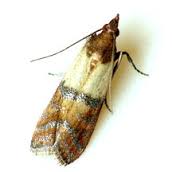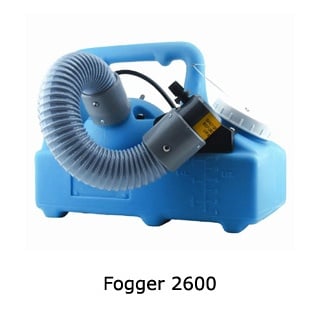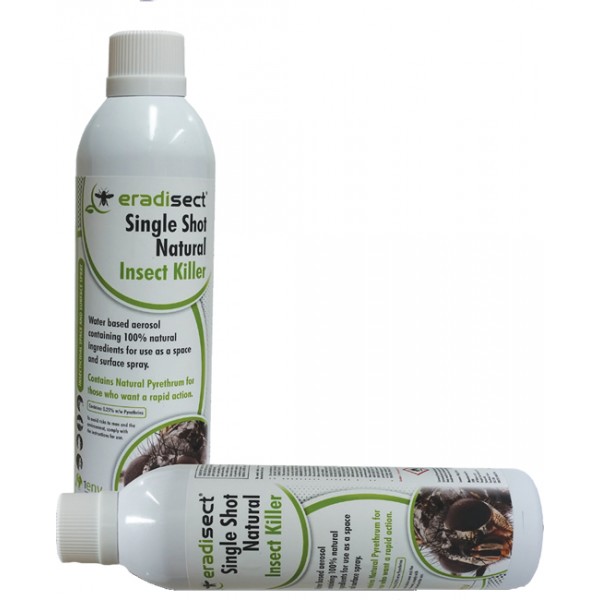Indian Meal Moth

Indian meal moths are a common pest of stored products found in homes, food processing plants, grain storage and processing facilities. The larvae prefer to feed on coarsely ground flour and meal but commonly feed on whole grains, dried fruit, nuts, chocolate, beans, crackers, biscuits, dry dog food, bird seed, and red peppers. The larvae of this pantry pest produce a silk webbing over the surface of the materials upon which they are feeding. The webbing contains large amounts of their frass. The damage caused by this pest's feeding is compounded by the presence of this repulsive material. The larvae move into cracks and crevices in the food material, feeding within or near this silken mat. The mature larvae often move away from infested materials to pupate in cracks or crevices. This behavior pattern often allows them to be discovered by homeowners.
This pest of stored products is about 3/8 inch long at rest, wing spread is about 5/8 inch. When at rest the wings are folded together along the line of the body. The front half of the forewings is a grayish-white color, and the lower half is a rusty red-brown color. The adult moths usually fly at night and lay eggs on food such as grain, dried food, and especially pet food. The life cycle and habits of this pantry pest is similar to other moths infesting stored products. Eggs are laid on or near the food. A female moth may deposit from 40 to 350 eggs. After hatching, the small caterpillars begin spinning silken threads in the infested food material. They feed for about two weeks before becoming full grown. They then crawl up to the surface of the food material or often up walls and pupate within a cocoon. The adult emerges in about 30 days. The entire cycle requires about six weeks and there are from 4-6 generations per year.

Indian Meal Moths infestations will usually be brought into commercial and domestic kitchens within there weekly shopping.
To eliminate these moths you should start by inspecting the kitchen units to locate the source of meal moth infestation. Usually found in grains or cereals. Removing an disposing of the foods Meal Moth LARVAE are actively visible in. This is the first step to suppress the infestation
The second step we recommend professionally treating the infested areas with a fogger to remove all adult meal moths . This will circumvent re-infestation.
2 to 3 treatments may be required.

A broad spectrum space and surface spray made from natural pyrethrins. , Water based for safety, Single shot with total release trigger, Can be used in food areas, Rapid action, Non-flammableCan be used in animal facilities including poultry houses, Can be used in organic assurance schemes
Contains: Pyrethrins 0.25%
Control: Flies, wasps, cockroaches, ants, fleas, moths, bed bugs, lice and all other flying and crawling insects.



